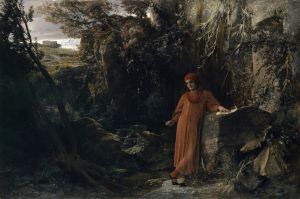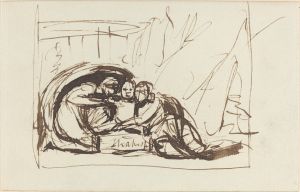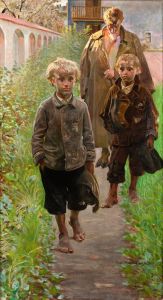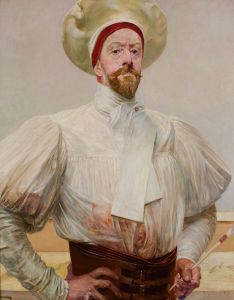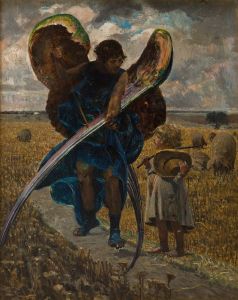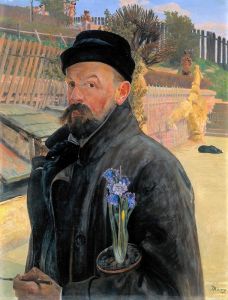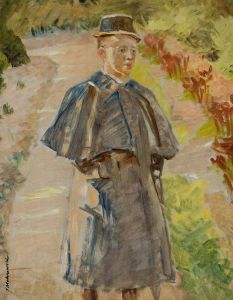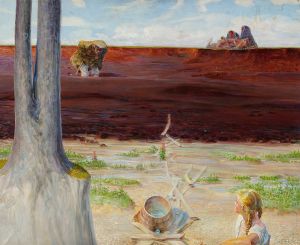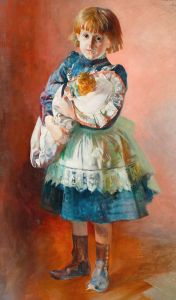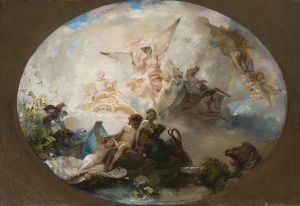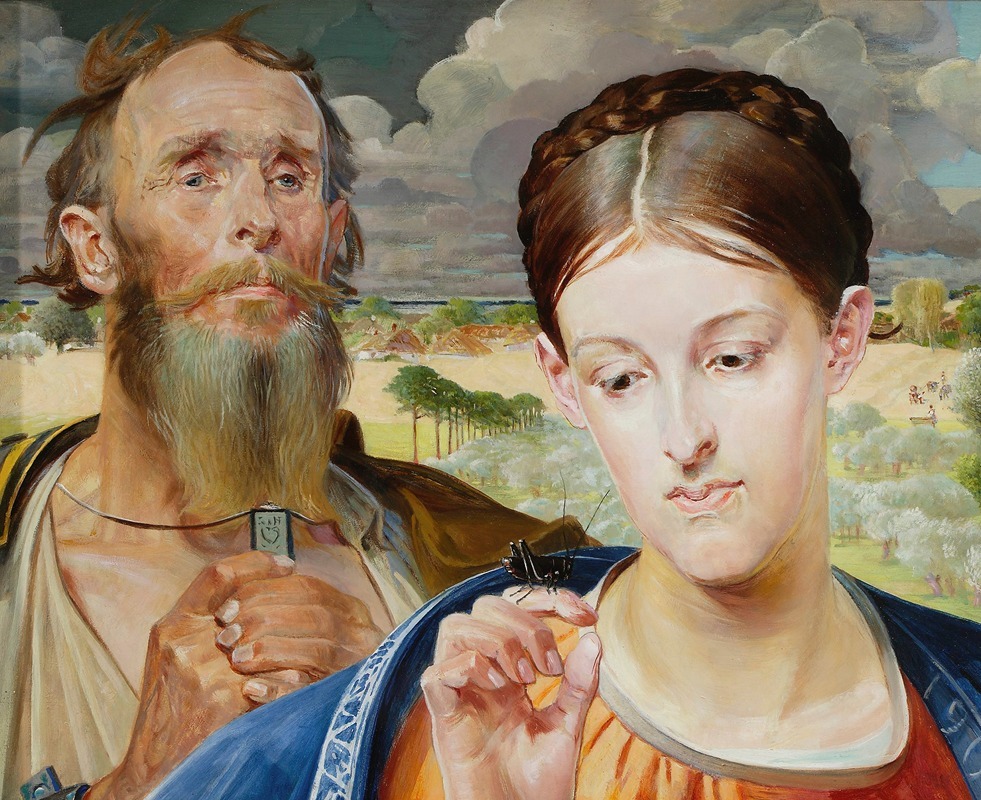
Music – left wing of the triptych
A hand-painted replica of Jacek Malczewski’s masterpiece Music – left wing of the triptych, meticulously crafted by professional artists to capture the true essence of the original. Each piece is created with museum-quality canvas and rare mineral pigments, carefully painted by experienced artists with delicate brushstrokes and rich, layered colors to perfectly recreate the texture of the original artwork. Unlike machine-printed reproductions, this hand-painted version brings the painting to life, infused with the artist’s emotions and skill in every stroke. Whether for personal collection or home decoration, it instantly elevates the artistic atmosphere of any space.
Jacek Malczewski, a prominent Polish painter associated with the Symbolist movement, created the triptych "Music" in the early 20th century. This triptych is a notable example of Malczewski's unique style, which often combined elements of Polish folklore, mythology, and national identity with a deeply personal and symbolic language. The left wing of the triptych, often simply referred to as "Music – left wing," is an integral part of this composition, contributing to the overall thematic and visual narrative of the work.
Malczewski was born in 1854 in Radom, Poland, and his career spanned a period of significant political and cultural change in Poland. He studied at the School of Fine Arts in Kraków and later in Paris, where he was influenced by both Polish Romanticism and the broader European Symbolist movement. His works frequently explore themes of patriotism, existential reflection, and the human condition, often through allegorical and fantastical imagery.
The triptych "Music" is a reflection of Malczewski's fascination with the interplay between art, nature, and the human spirit. While specific details about the left wing of the triptych are limited, it is understood that Malczewski's use of music as a theme is symbolic, representing harmony, emotion, and the transcendental qualities of art. Music, in Malczewski's work, often serves as a metaphor for the ineffable and the spiritual, bridging the gap between the earthly and the divine.
In the broader context of Malczewski's oeuvre, the triptych can be seen as part of his exploration of Polish identity and the role of the artist in society. During Malczewski's lifetime, Poland was partitioned and lacked political independence, which deeply influenced his work. His paintings often reflect a longing for national unity and cultural revival, using symbolism to convey messages of hope and resilience.
Malczewski's style is characterized by a vivid color palette, meticulous attention to detail, and a penchant for blending realism with fantastical elements. His figures are often depicted in dreamlike settings, surrounded by lush landscapes or mythical creatures, which serve to enhance the symbolic nature of his compositions.
The left wing of the "Music" triptych, like much of Malczewski's work, invites viewers to engage with the painting on multiple levels, encouraging interpretations that go beyond the literal to explore deeper philosophical and emotional themes. While specific interpretations of the left wing may vary, it is clear that Malczewski intended for his audience to reflect on the power of music and art as transformative forces in human life.
Jacek Malczewski's contribution to Polish art is significant, and his works continue to be celebrated for their rich symbolism and emotional depth. The "Music" triptych, with its evocative imagery and profound themes, remains an important part of his legacy, illustrating his mastery of the Symbolist style and his commitment to exploring the complexities of the human experience through art.





